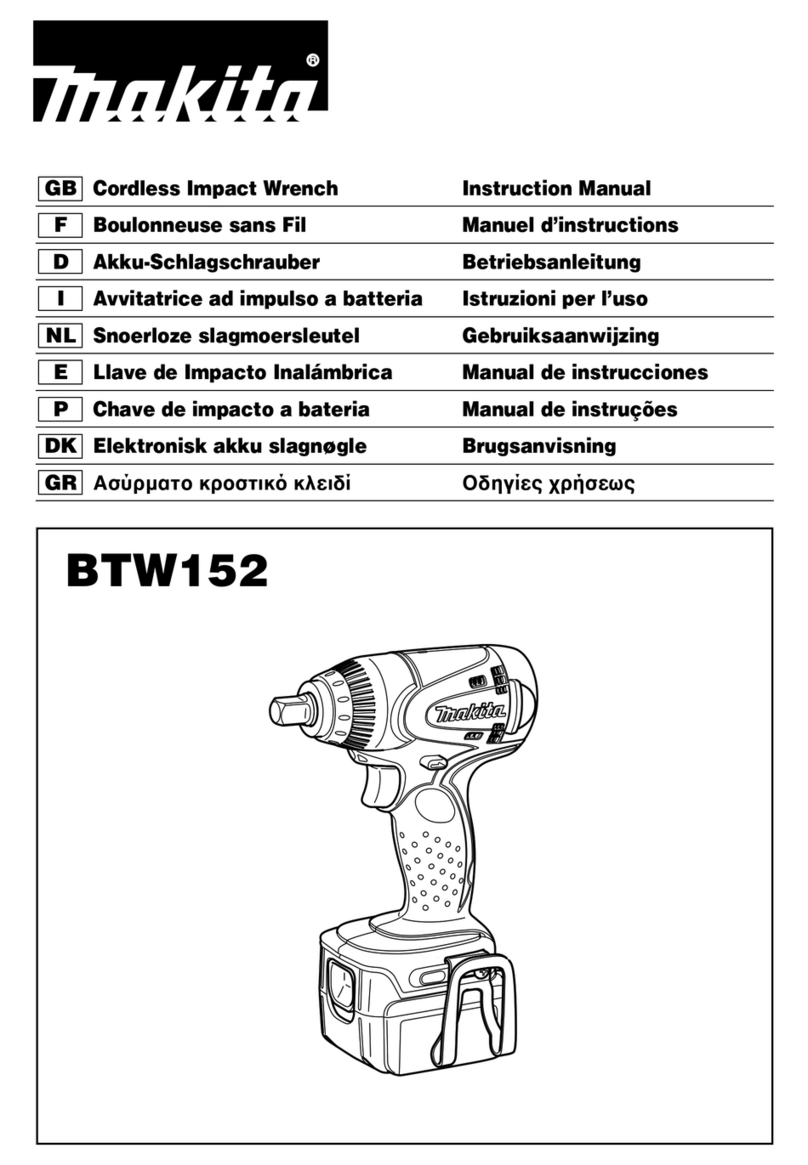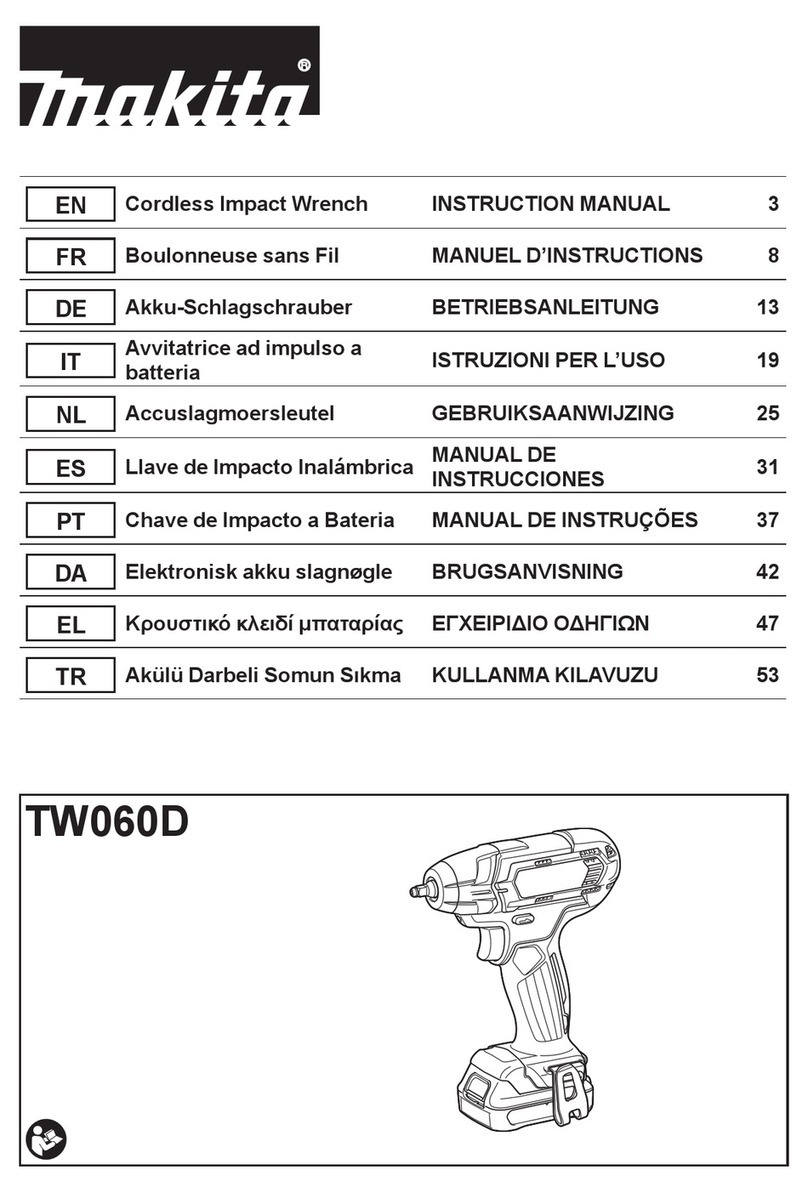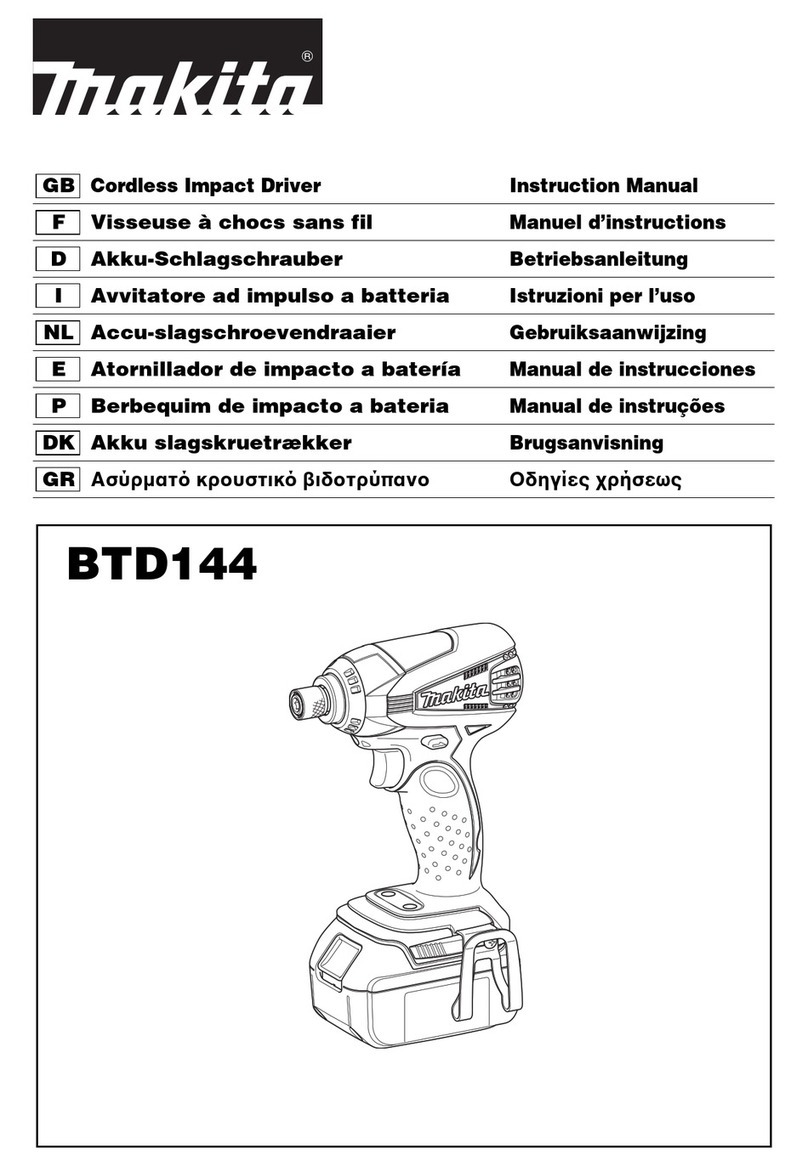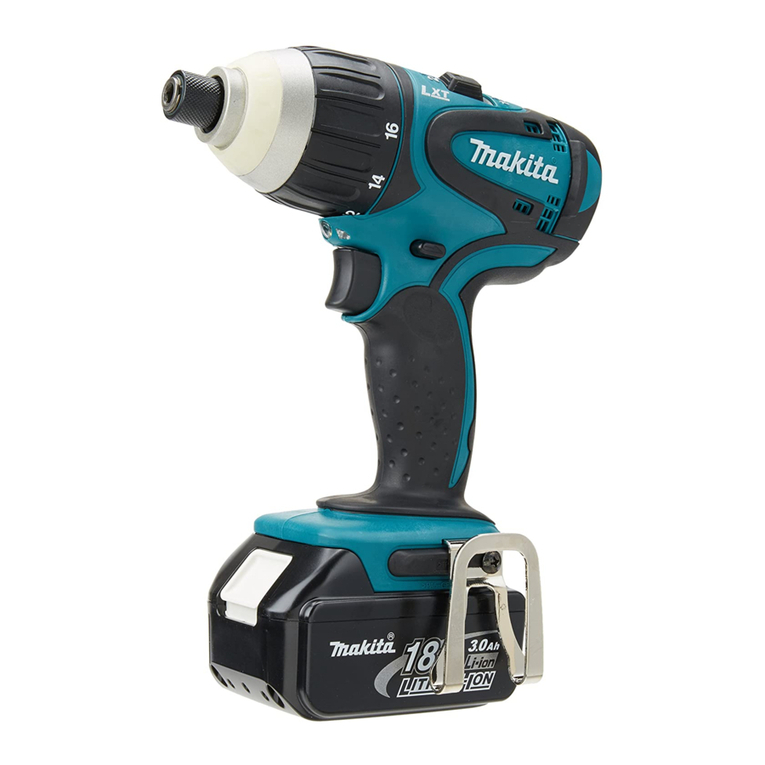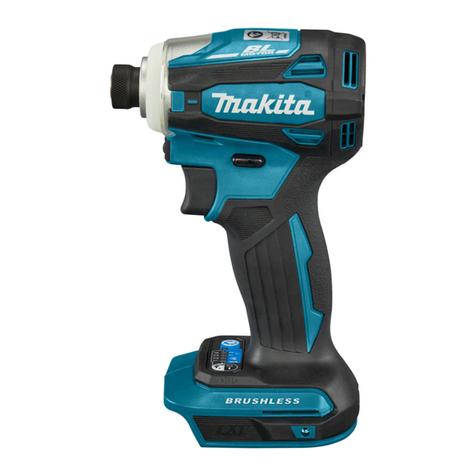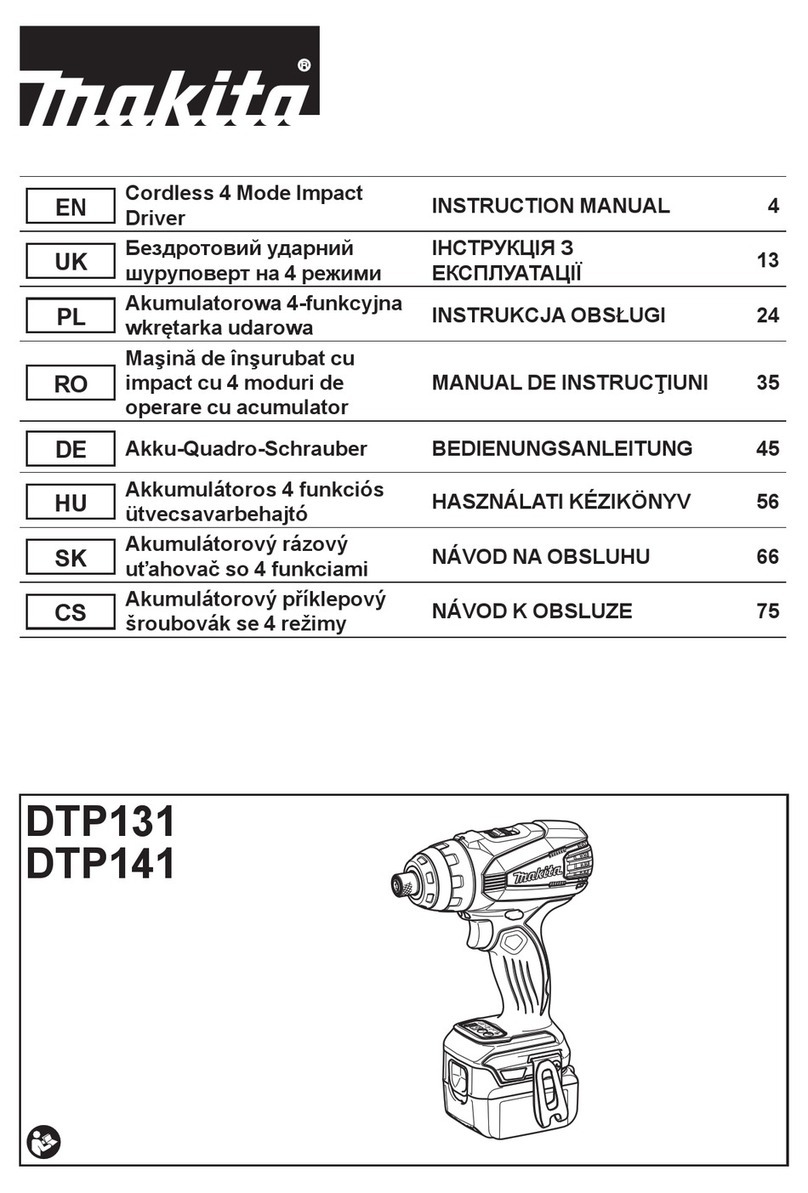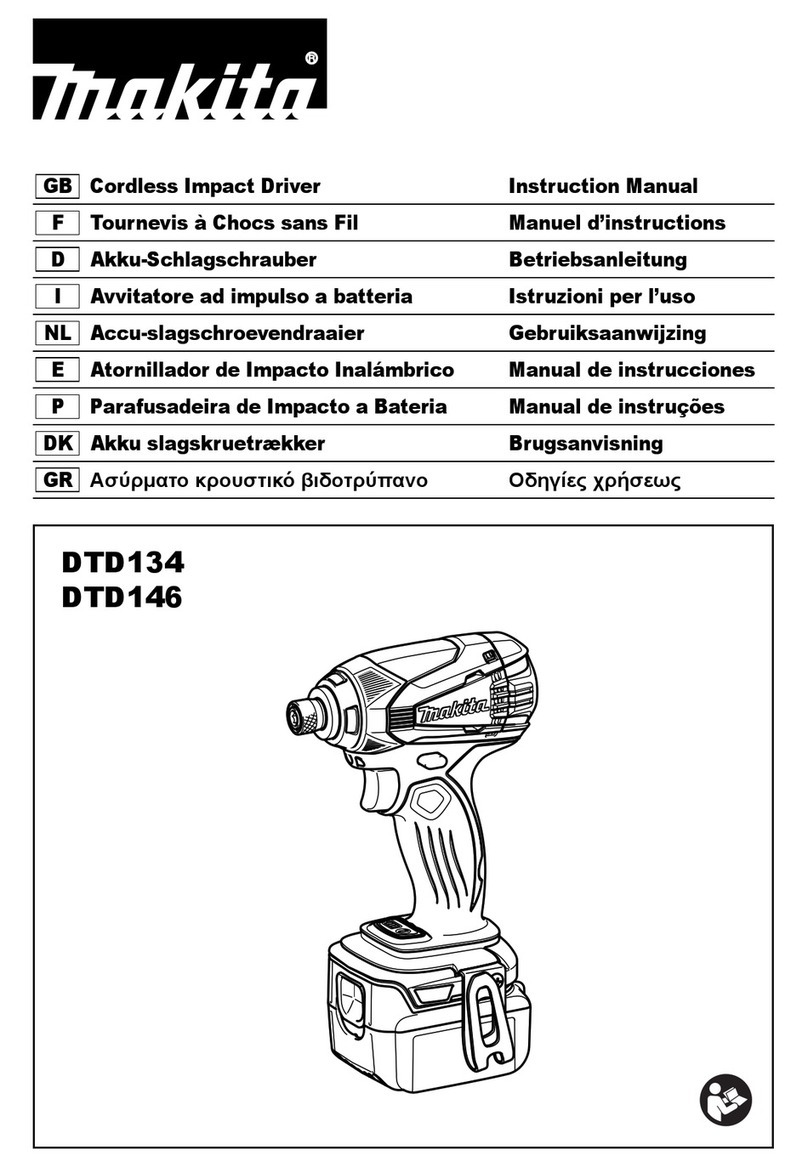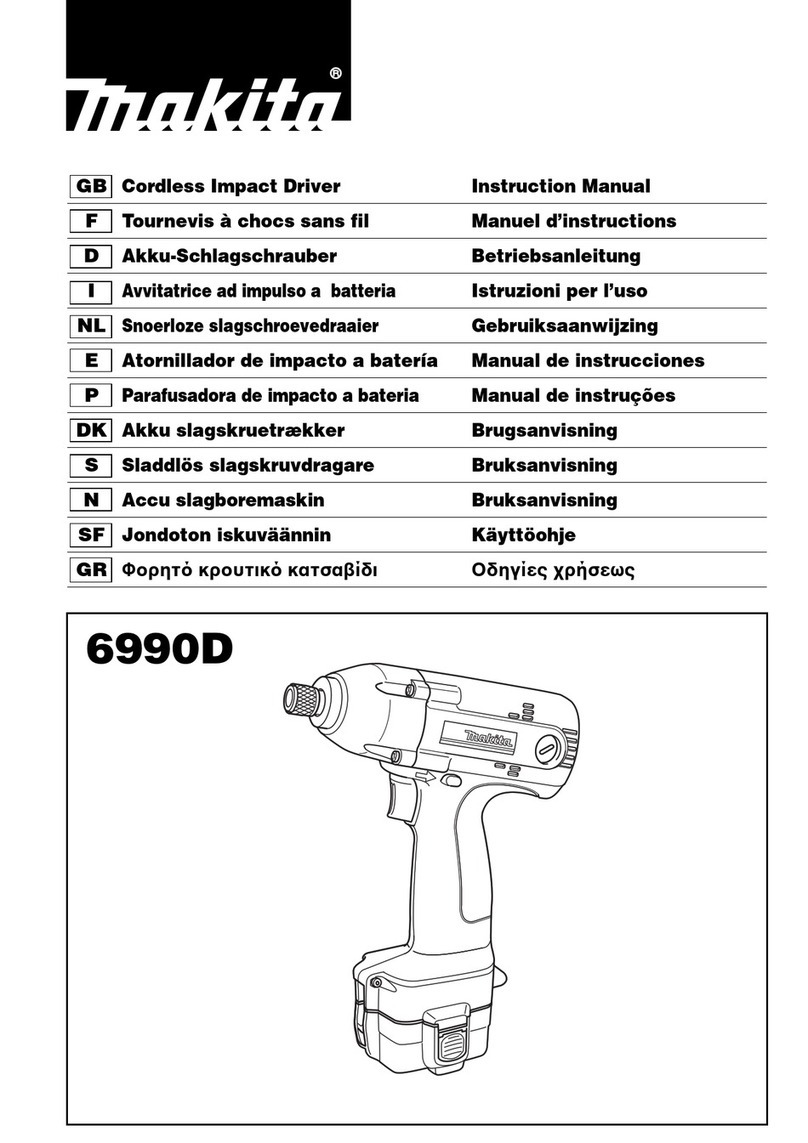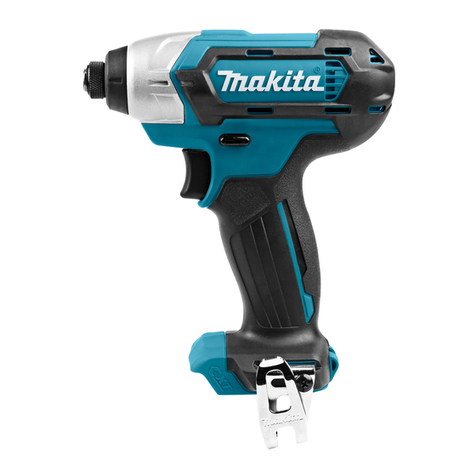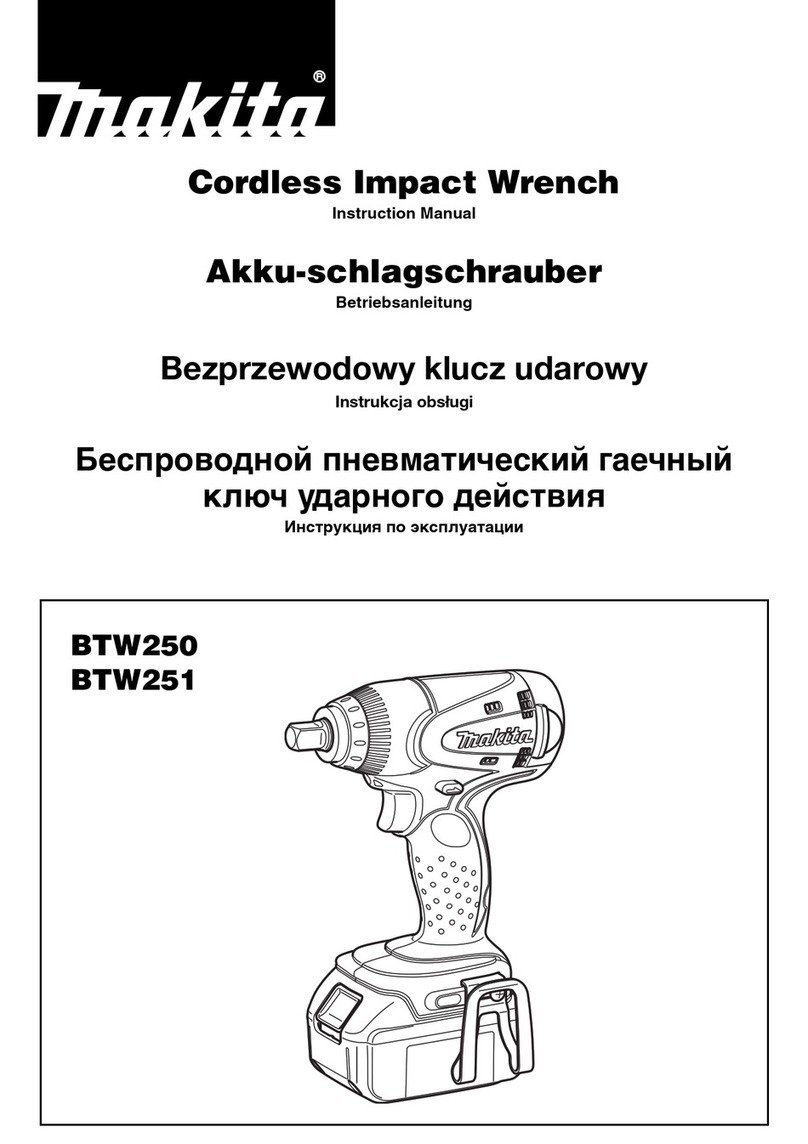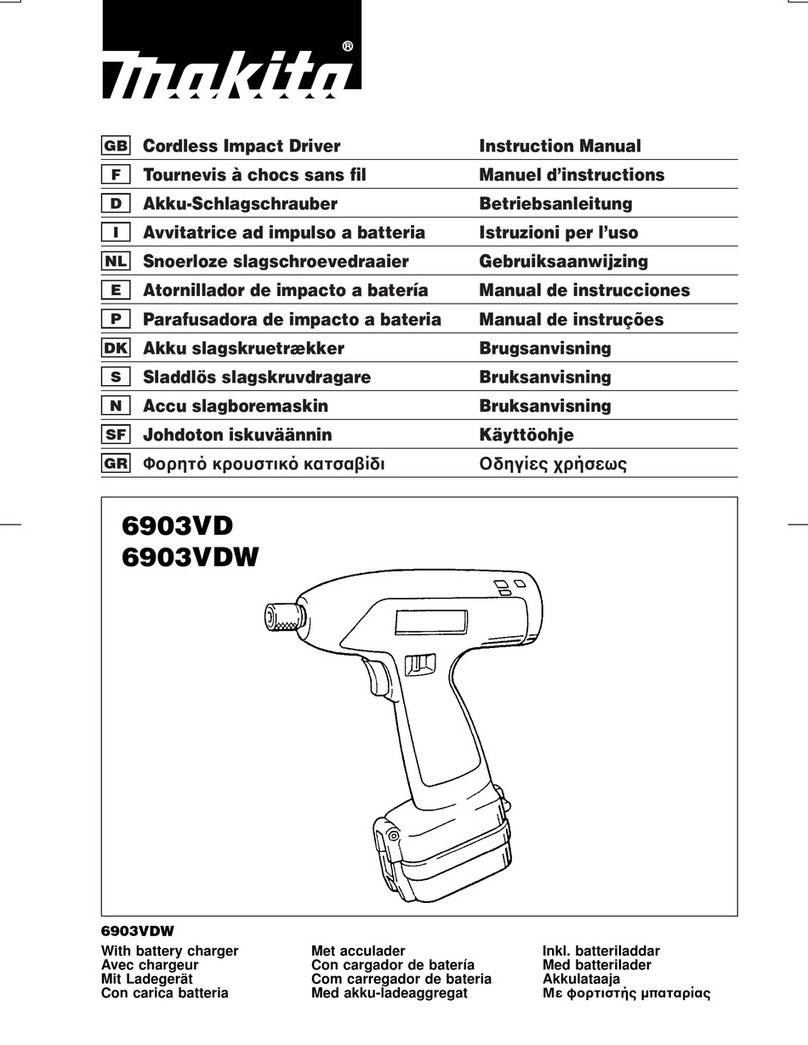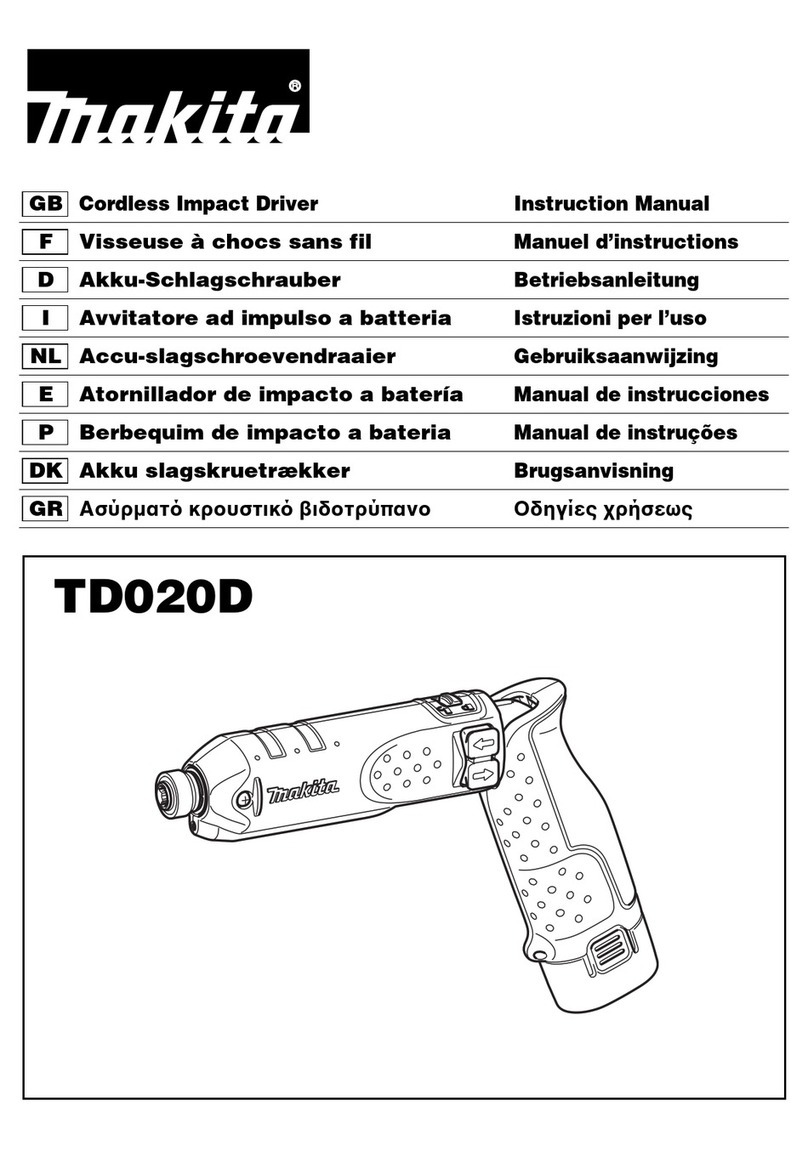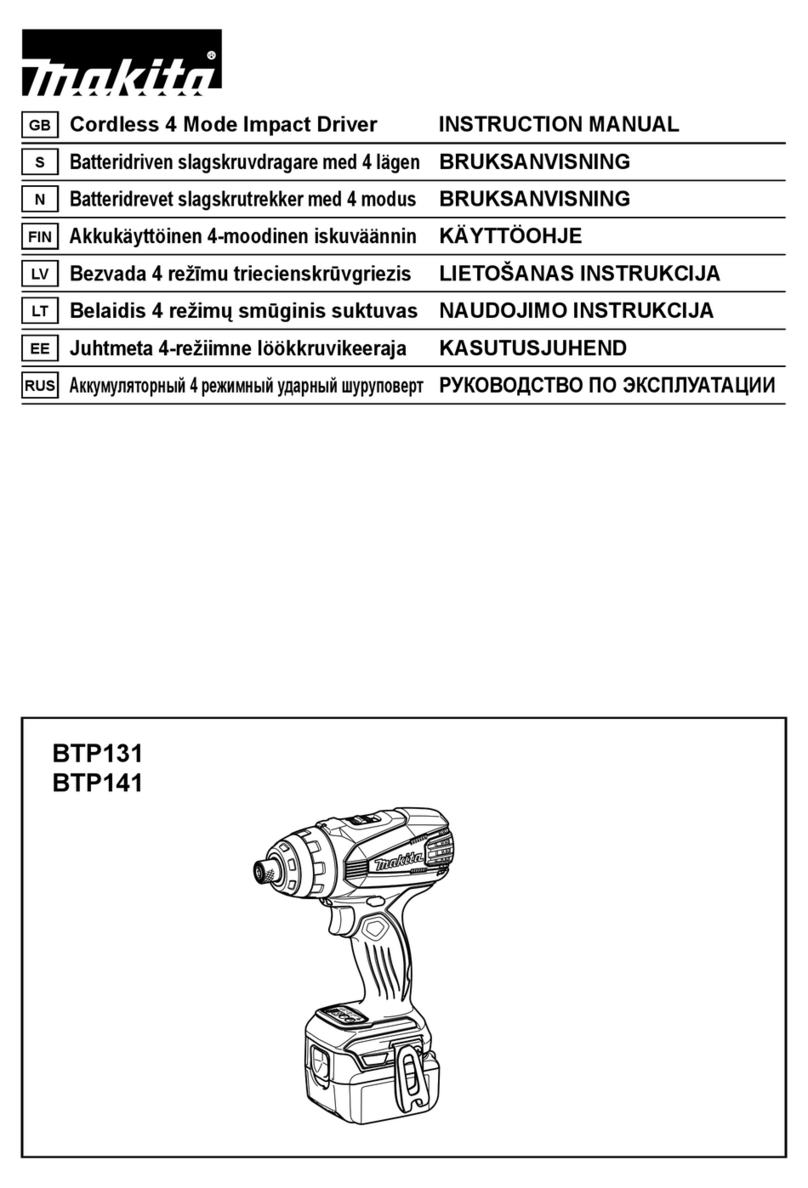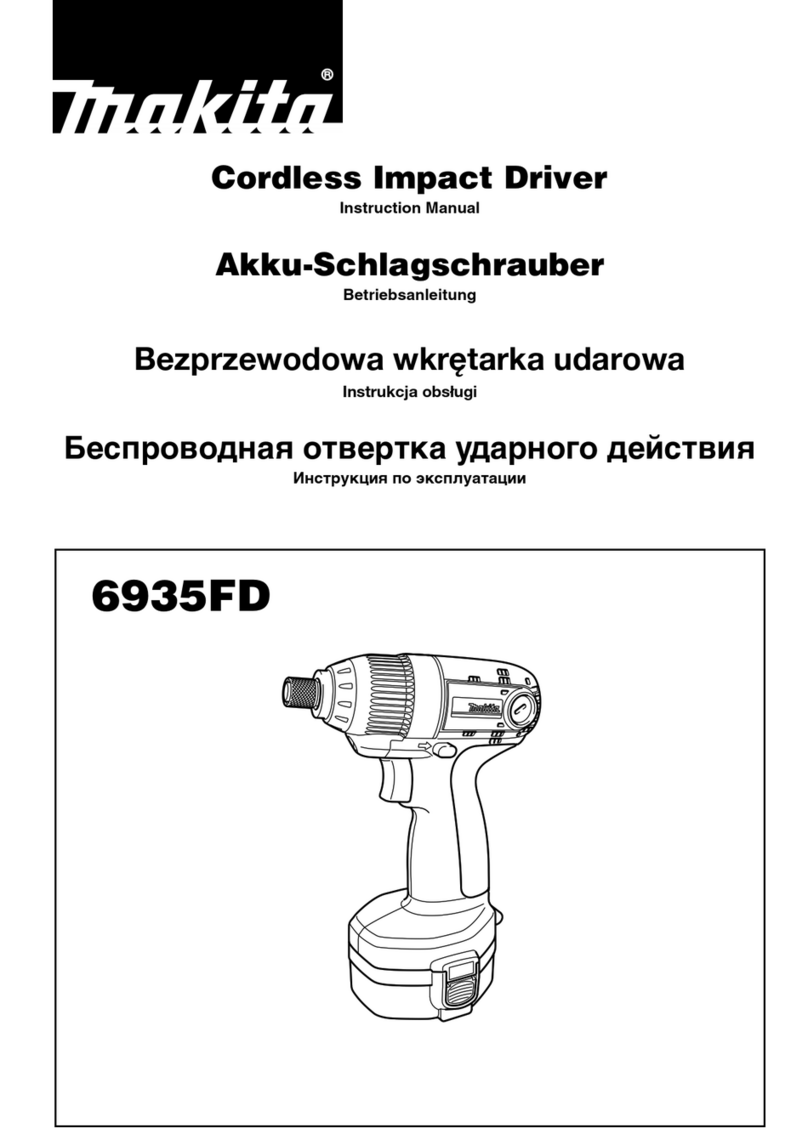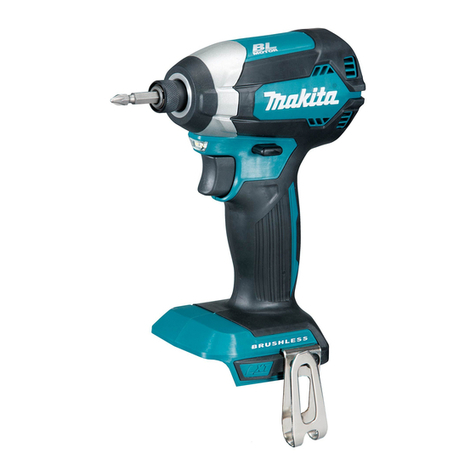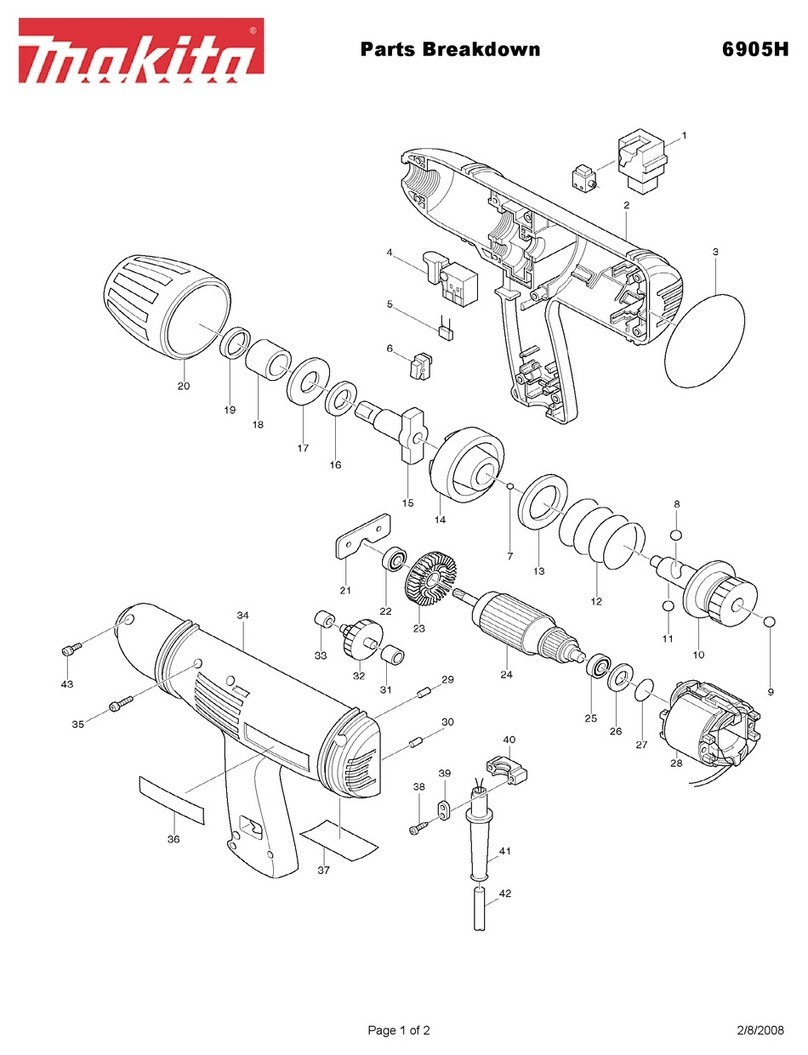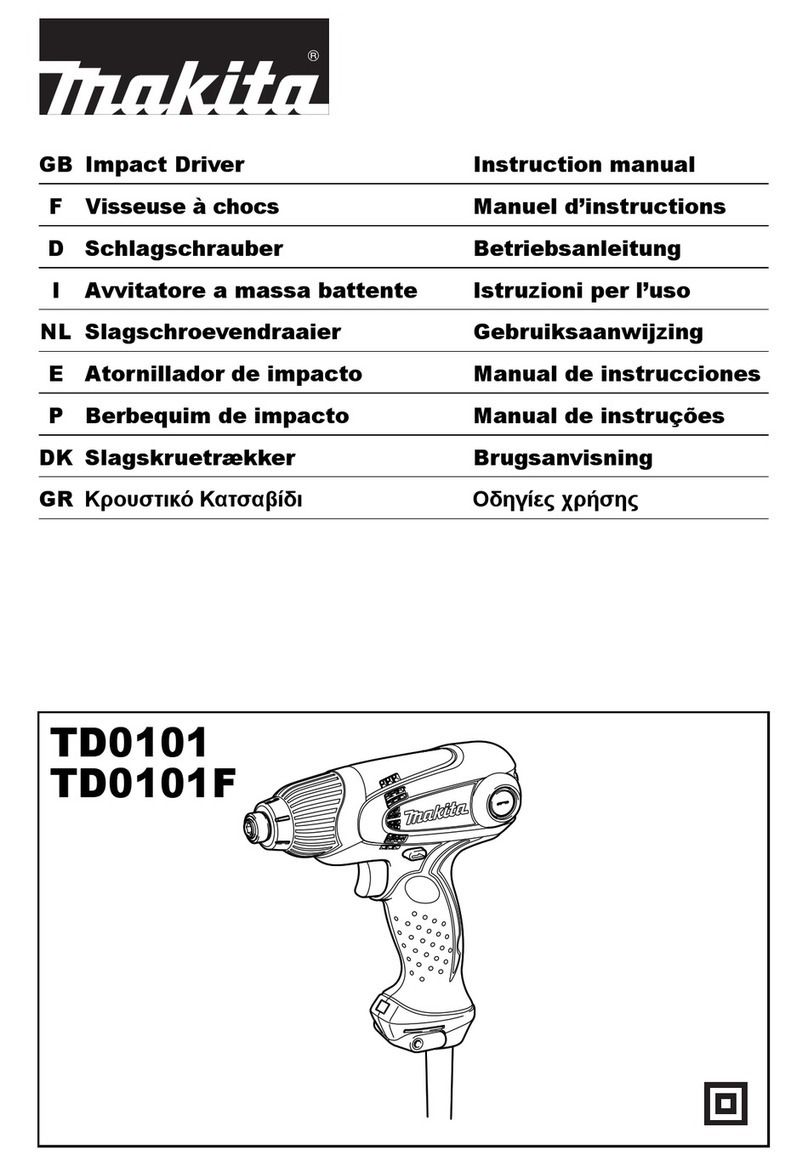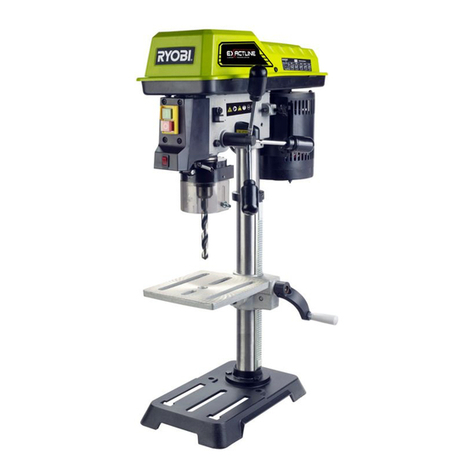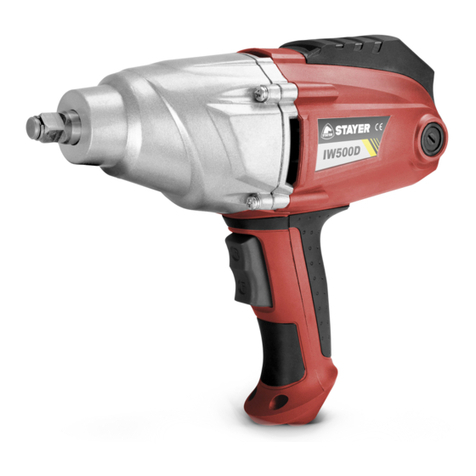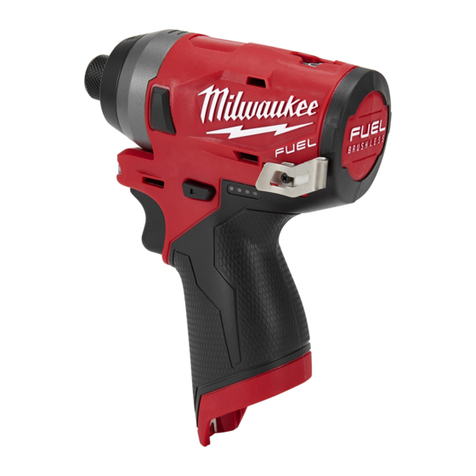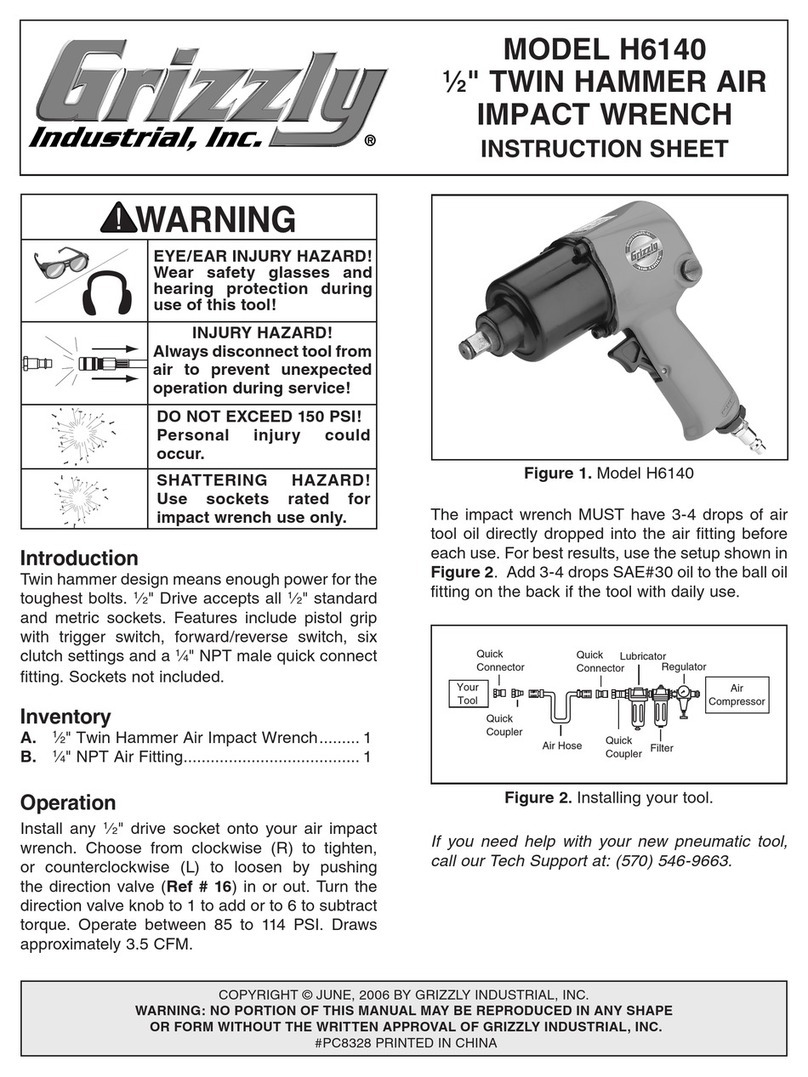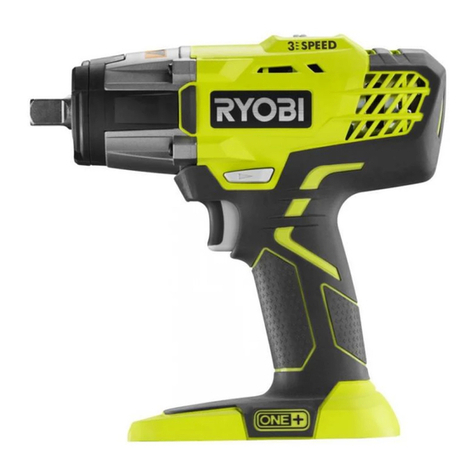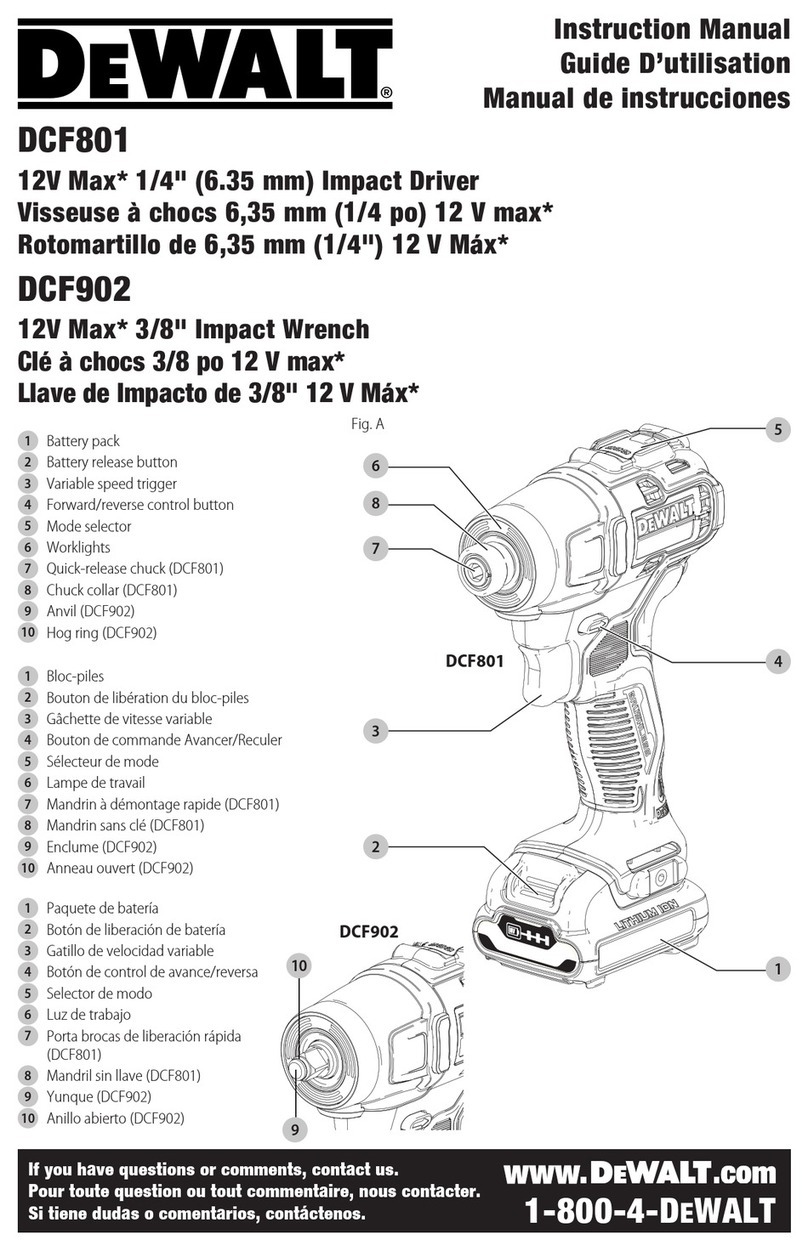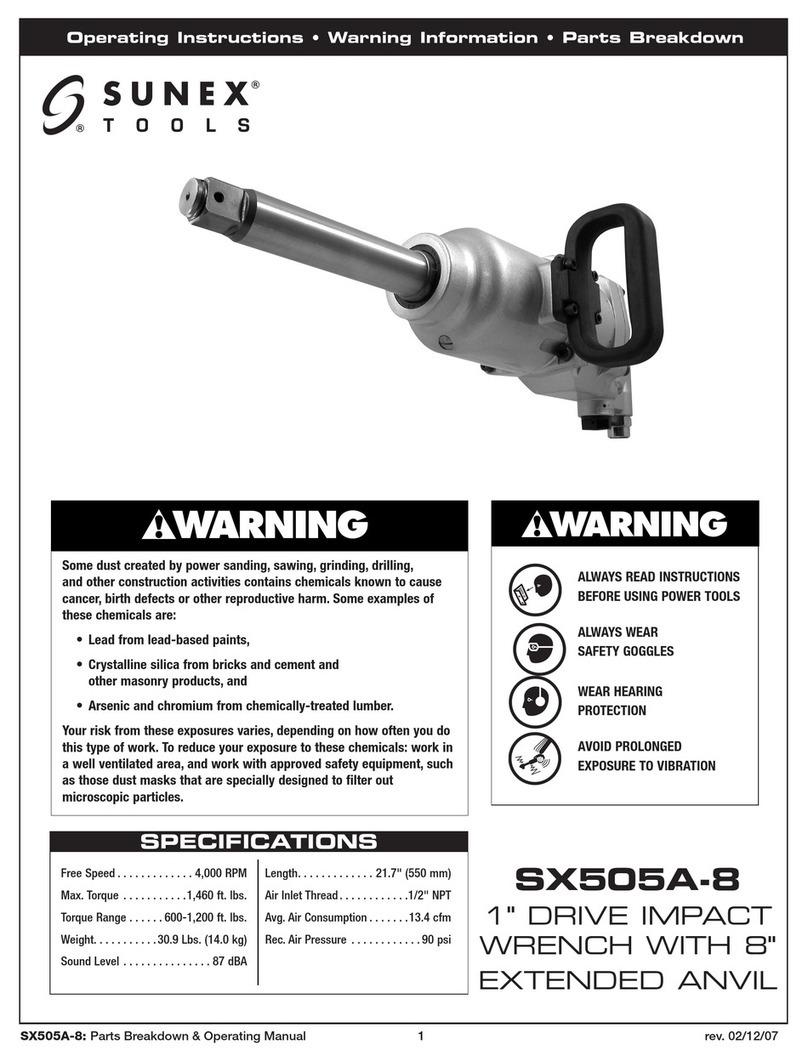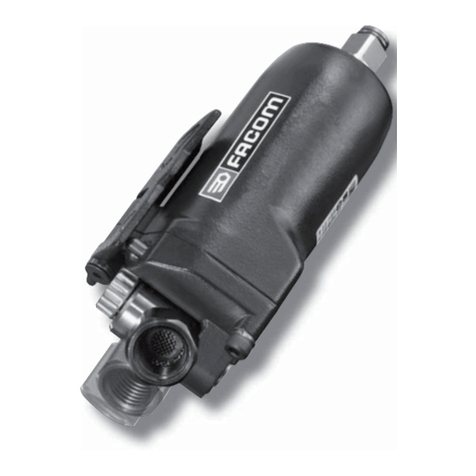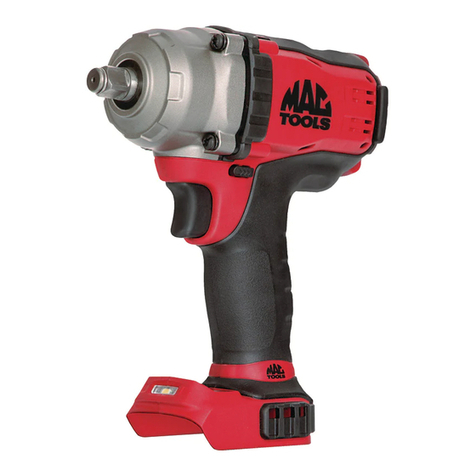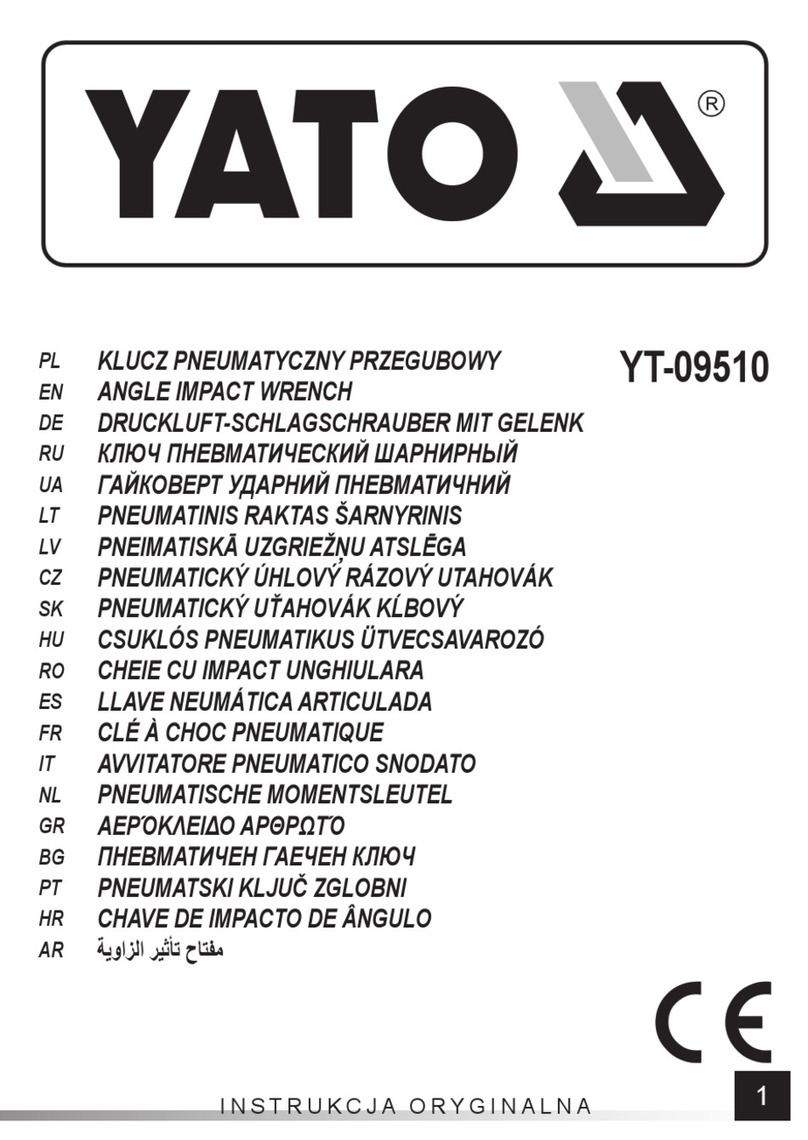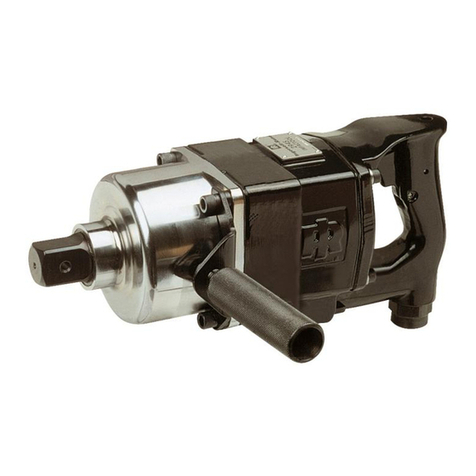
9
15. Wenn Anschlussvorrichtungen für Staubab-
saug- und Staubsammelgeräte vorhanden sind,
sollten diese montiert und sachgerecht verwen-
det werden. Die Verwendung solcher Vorrichtungen
kann durch Staub verursachte Gefahren reduzieren.
Gebrauch und Pflege von Elektrowerkzeugen
16. Setzen Sie Elektrowerkzeuge keiner Gewaltan-
wendung aus. Verwenden Sie das korrekte Elek-
trowerkzeug für Ihre Anwendung. Ein korrektes
Elektrowerkzeug verrichtet die anstehende Arbeit
bei sachgemäßer Handhabung besser und sicherer.
17. Benutzen Sie das Elektrowerkzeug nicht, wenn
es sich nicht mit dem Ein-Aus-Schalter ein- und
ausschalten lässt. Ein Elektrowerkzeug, das nicht
auf die Schalterbetätigung reagiert, ist gefährlich
und muss repariert werden.
18. Trennen Sie den Stecker von der Stromquelle
und/oder den Akku vom Elektrowerkzeug, bevor
Sie Einstellungen durchführen, Zubehör aus-
wechseln oder das Elektrowerkzeug lagern. Sol-
che vorbeugenden Sicherheitsmaßnahmen
reduzieren die Gefahr eines versehentlichen Ein-
schaltens des Elektrowerkzeugs.
19. Bewahren Sie unbenutzte Elektrowerkzeuge
außer Reichweite von Kindern auf, und lassen
Sie nicht zu, dass Personen, die nicht mit dem
Elektrowerkzeug oder diesen Anweisungen ver-
traut sind, das Elektrowerkzeug benutzen. Elek-
trowerkzeuge in den Händen unerfahrener Benutzer
sind gefährlich.
20. Pflegen Sie Elektrowerkzeuge. Überprüfen Sie
Elektrowerkzeuge auf Fehlausrichtung oder
Schleifen beweglicher Teile, Beschädigung von
Teilen und andere Zustände, die ihren Betrieb
beeinträchtigen können. Lassen Sie das Elektro-
werkzeug bei Beschädigung vor der Benutzung
reparieren. Viele Unfälle werden durch schlecht
gewartete Elektrowerkzeuge verursacht.
21. Halten Sie Schneidwerkzeuge scharf und sau-
ber. Gut instand gehaltene Schneidwerkzeuge mit
scharfen Schneiden sind weniger anfällig für Klem-
men und lassen sich leichter handhaben.
22. Benutzen Sie das Elektrowerkzeug, das Zubehör,
die Einsatzwerkzeuge usw. gemäß diesen
Anweisungen und in der für das jeweilige Elek-
trowerkzeug vorgesehenen Weise, und berück-
sichtigen Sie stets die Arbeitsbedingungen und
die anstehende Arbeit. Unsachgemäßer Gebrauch
des Elektrowerkzeugs kann zu einer Gefahrensitua-
tion führen.
Gebrauch und Pflege von Akkuwerkzeugen
23. Vergewissern Sie sich, dass sich der Ein-Aus-
Schalter in der Aus-Stellung befindet, bevor Sie
den Akku anschließen. Das Anschließen des
Akkus an ein Elektrowerkzeug, dessen Ein-Aus-
Schalter eingeschaltet ist, kann zu Unfällen führen.
24. Laden Sie den Akku nur mit dem vom Hersteller
vorgeschriebenen Ladegerät. Ein Ladegerät, das
für einen Akkutyp geeignet ist, kann bei Verwendung
mit einem anderen Akku eine Brandgefahr darstel-
len.
25. Benutzen Sie Elektrowerkzeuge nur mit den aus-
drücklich vorgeschriebenen Akkus. Bei Verwen-
dung irgendwelcher anderer Akkus besteht
Verletzungs- und Brandgefahr.
26. Bewahren Sie den Akku bei Nichtgebrauch nicht
zusammen mit Metallgegenständen, wie Büro-
klammern, Münzen, Schlüsseln, Nägeln, Schrau-
ben, und anderen kleinen Metallteilen auf,
welche die Kontakte kurzschließen können. Kurz-
schließen der Akkukontakte kann Verbrennungen
oder einen Brand verursachen.
27. Bei Missbrauch kann Flüssigkeit aus dem Akku
austreten. Vermeiden Sie Kontakt mit dieser
Flüssigkeit. Falls Sie versehentlich mit der Flüs-
sigkeit in Berührung kommen, spülen Sie die
betroffenen Stellen mit Wasser ab. Falls die Flüs-
sigkeit in die Augen gelangt, begeben Sie sich
zusätzlich in ärztliche Behandlung. Die vom Akku
austretende Flüssigkeit kann Hautreizungen oder
Verätzungen verursachen.
Wartung
28. Lassen Sie Ihr Elektrowerkzeug nur unter Ver-
wendung identischer Ersatzteile von einem qua-
lifizierten Wartungstechniker warten. Dadurch
wird die Aufrechterhaltung der Sicherheit des Elek-
trowerkzeugs gewährleistet.
29. Befolgen Sie die Anweisungen für die Schmie-
rung und den Austausch von Zubehör.
30. Halten Sie Griffe trocken, sauber und frei von Öl
und Fett.
WICHTIGE SICHERHEITSVORSCHRIFTEN
FÜR AKKU
1. Lesen Sie vor der Benutzung des Akkus alle
Anweisungen und Warnhinweise, die an (1)
Ladegerät, (2) Akku und (3) Akkuwerkzeug ange-
bracht sind.
2. Unterlassen Sie ein Zerlegen des Akkus.
3. Falls die Betriebszeit beträchtlich kürzer gewor-
den ist, stellen Sie den Betrieb sofort ein. Ande-
renfalls besteht die Gefahr von Überhitzung,
möglichen Verbrennungen und sogar einer
Explosion.
4. Falls Elektrolyt in Ihre Augen gelangt, waschen
Sie sie mit sauberem Wasser aus, und begeben
Sie sich unverzüglich in ärztliche Behandlung.
Anderenfalls können Sie Ihre Sehkraft verlieren.
5. Der Akku darf nicht kurzgeschlossen werden:
(1) Die Kontakte dürfen nicht mit leitfähigem
Material berührt werden.
(2) Lagern Sie den Akku nicht in einem Behälter
zusammen mit anderen Metallgegenständen,
wie z.B. Nägel, Münzen usw.
(3) Setzen Sie den Akku weder Wasser noch
Regen aus.
Ein Kurzschluss des Akkus verursacht starken
Stromfluss, der Überhitzung, Verbrennungen
und einen Defekt zur Folge haben kann.
6. Lagern Sie Maschine und Akku nicht an Orten,
an denen die Temperatur 50°C erreichen oder
überschreiten kann.
7. Versuchen Sie niemals, den Akku zu verbrennen,
selbst wenn er stark beschädigt oder vollkom-
men verbraucht ist. Der Akku kann im Feuer
explodieren.
8. Achten Sie darauf, dass der Akku nicht fallen
gelassen oder Stößen ausgesetzt wird.
BEWAHREN SIE DIESE HINWEISE SORGFÄL-
TIG AUF.
